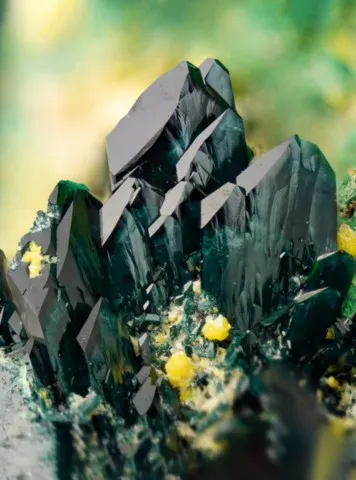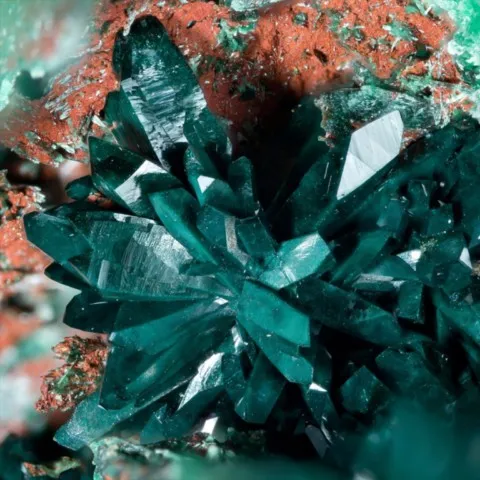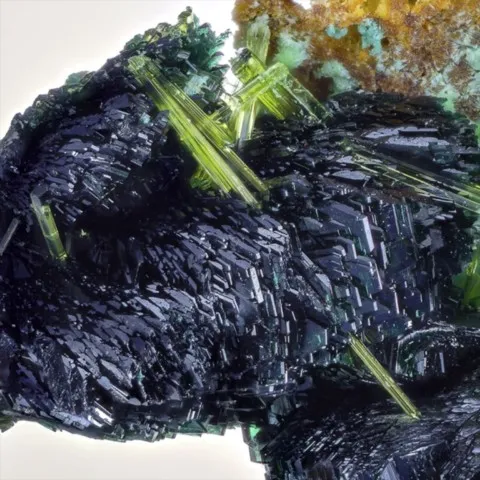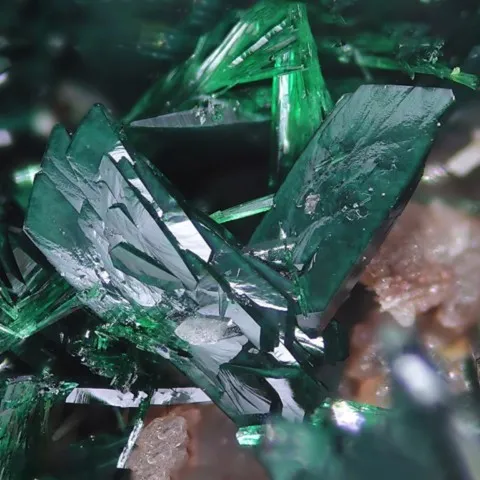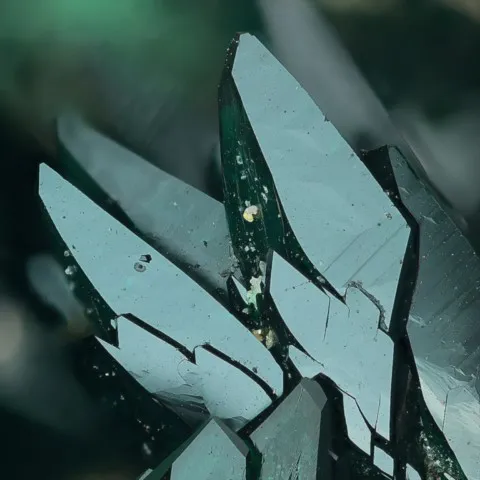VANDENBRANDEITE
Class : Oxides and hydroxides
Subclass : Uranyl hydroxides
Crystal system : Triclinic
Chemistry : Cu(UO2)(OH)4
Rarity : Very rare
Vandenbrandeite is an extremely rare hydroxide of copper and uranium. Its existence in the oxidation zones of uranium deposits is conditioned, as for torbernite, by the presence of copper minerals in addition to uraninite. It therefore appears alongside secondary minerals of uranium (kasolite, uranophane, sklodowskite), copper (malachite), and copper and uranium (torbernite, cuprosklodowskite). It was named in honor of the Belgian geologist Pierre Van den Brande, discoverer of the Kalongwe uranium deposit (Democratic Republic of Congo). Vandenbrandeite forms squat, dark green to blackish green lamellar crystals, no larger than one centimeter, grouped in lamellar or fibrous aggregates.
Main photo : Vandenbrandeite from Musonoï Mine, Katanga, DR Congo © Francisco Antonio Garcia Alacid
Vandenbrandeite in the World
Twinning
No twinning known for this mineral species.
Fakes and treatments
No fakes listed for this mineral species.
Hardness : 4
Density : 5.03
Fracture : Undetermined
Streak : Green
TP : Translucent to transparent
RI : 1.765 to 1.800
Birefringence : 0.035
Optical character : Biaxial -
Pleochroism : Visible
Fluorescence : None
Solubility : Acids
Magnetism : NoneRadioactivity : Very strong

